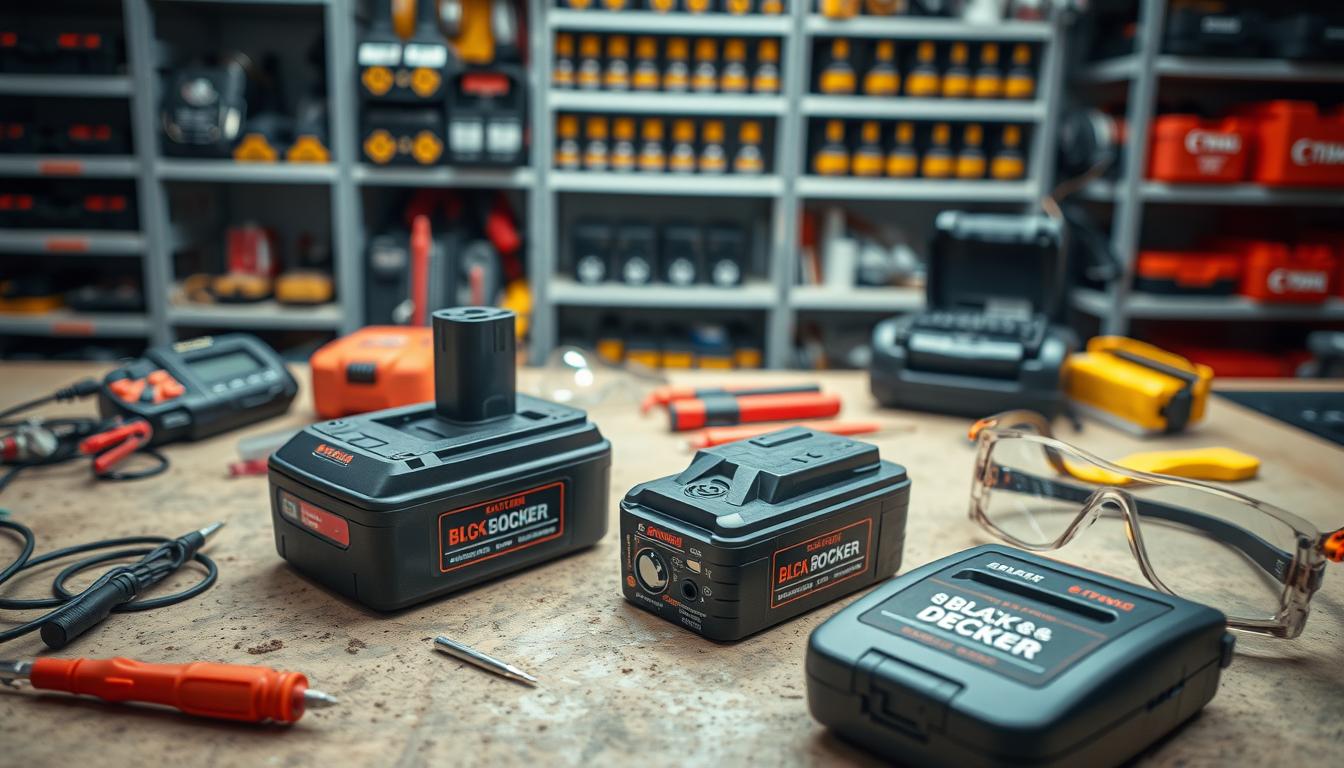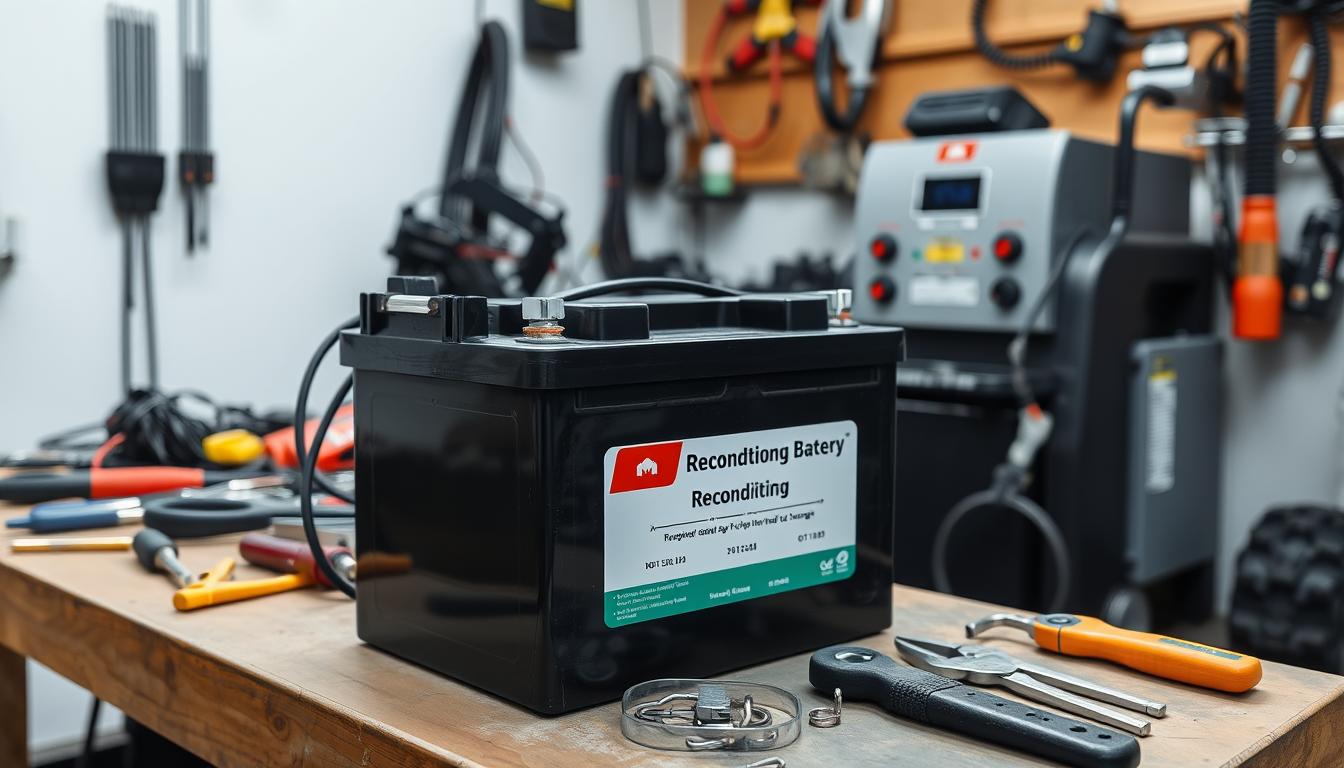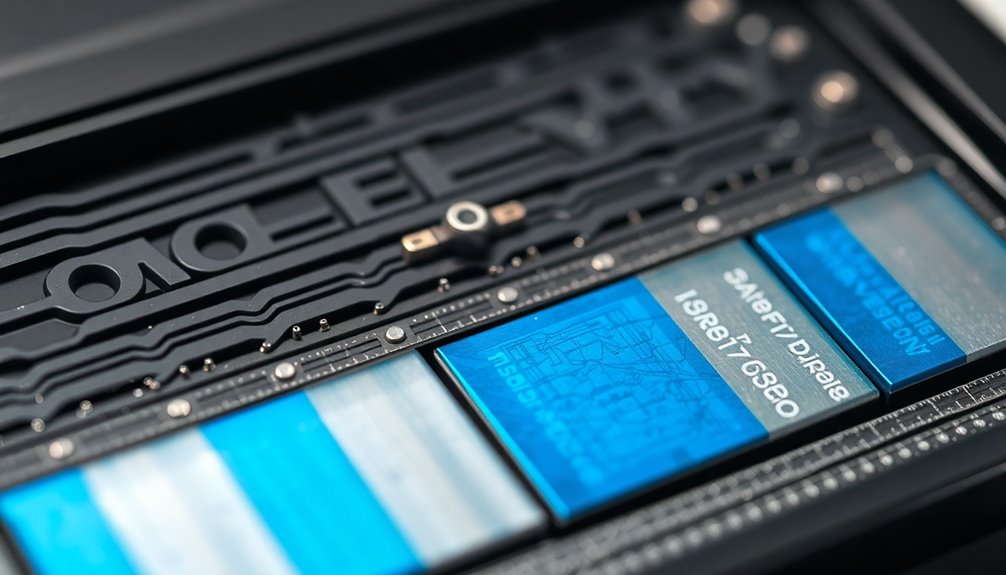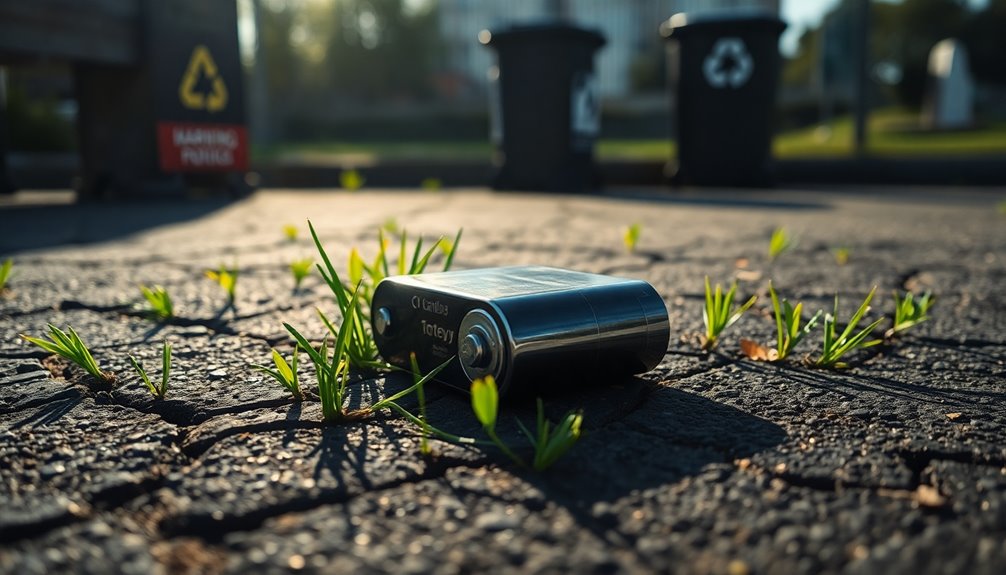Did you know that over 15 years of experience exists in repairing, rebuilding, and replacing batteries specifically for e-bikes and power tools? This vast expertise extends to various brands, including Black and Decker, and highlights the importance of black and decker battery reconditioning to extend the lifespan of your tools1
. Not only does this process save you money, but it also plays a significant role in reducing waste, offering a practical solution for those looking to revive old batteries1.In this guide, you’ll learn about different types of Black and Decker batteries, common signs that your batteries need attention, and effective methods to maintain them, ensuring your tools remain functional for years to come.
Key Takeaways
- Reconditioning extends battery life and helps save money.
- Understanding battery types is crucial for effective maintenance.
- Recognizing signs of battery wear can prevent tool failure.
- Proper tools and techniques can significantly improve battery performance.
- Safety precautions are vital when reconditioning batteries.
Understanding Black and Decker Battery Types
When working with Black and Decker products, knowledge of various black and decker battery types is crucial for optimal performance. These batteries vary significantly in composition and use, affecting their application in tools and devices. An understanding of these types will enhance your approach to battery restoration and maintenance.
NiCad Batteries
NiCad, or nickel-cadmium batteries, have been a staple in many Black and Decker products for years. They are known for their durability and excellent discharge rates. A key feature of these batteries is the memory effect, which can reduce their maximum energy capacity if they are not fully discharged regularly2.
Lithium-Ion Batteries
Lithium-ion batteries have gained popularity, particularly in modern tools. Their lightweight nature and high energy density make them an ideal choice, with no memory effect to hinder usability. Users appreciate that these batteries often outperform older technologies in terms of longevity and efficiency, making them a preferred option for many Black and Decker products3.
Lead Acid Batteries
Lead acid batteries typically weigh more and possess lower energy density compared to their counterparts. However, they are commonly used in larger power tools due to their reliability and capacity to deliver high currents. Understanding the characteristics of these batteries is essential for effective reconditioning, leading to successful battery restoration efforts.
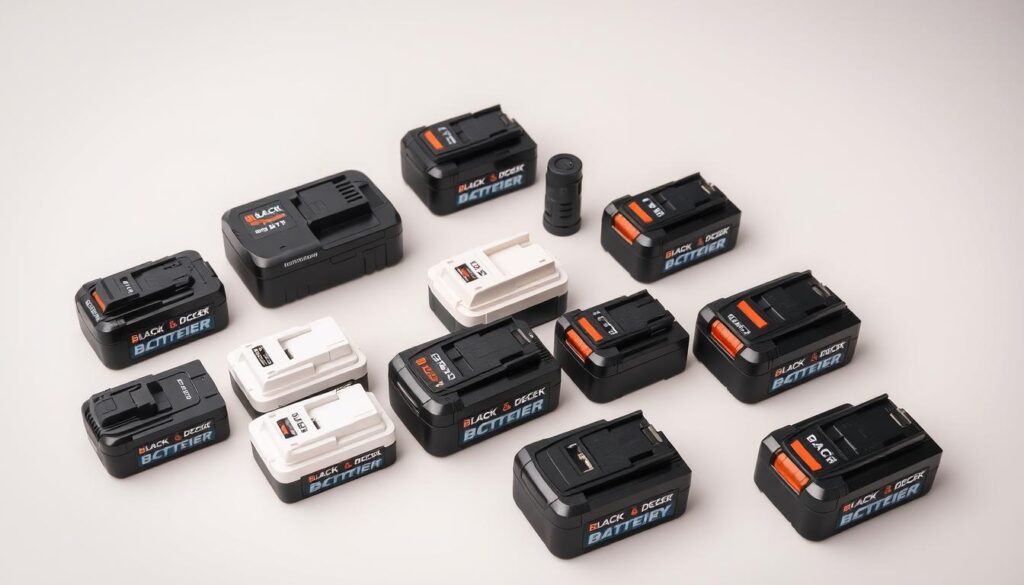
| Battery Type | Weight | Energy Density | Memory Effect | Common Applications |
|---|---|---|---|---|
| NiCad | Moderate | Low | Yes | Power Tools |
| Lithium-Ion | Lightweight | High | No | Modern Tools |
| Lead Acid | Heavy | Low to Moderate | No | Heavy-Duty Equipment |
Why Battery Reconditioning is Important
Battery reconditioning stands out as a crucial practice, helping you save costs while contributing positively to the environment. Embracing battery maintenance tips can significantly increase your savings. You can recover batteries that might otherwise be discarded, preventing the financial burden of purchasing new Black and Decker batteries, which can be quite costly. By reconditioning batteries, you not only avoid unnecessary expenses but also ensure optimal performance and longevity.
Cost Savings
Reconditioning your batteries can yield significant cost savings. It allows you to extend battery life rather than invest in new replacements. In fact, replacing worn-out batteries with new ones can be a hefty expense over time. You can keep your devices running smoothly while saving money. By consistently practicing battery maintenance tips, you foster a sustainable approach to power needs.
Environmental Benefits
Another key aspect of battery reconditioning is its environmental impact. It plays a vital role in reducing waste. Properly reconditioning batteries means fewer batteries being sent to landfills, which can be harmful to the environment. By extending the life of batteries, you promote sustainability and align with eco-friendly practices. This commitment not only conserves resources but also contributes to a healthier planet.

In summary, reconditioning batteries provides both financial advantages and environmental benefits. It brings forth a responsible choice that enhances efficiency while also encouraging a sustainable lifestyle456.
Signs Your Black and Decker Battery Needs Reconditioning
Recognizing the signs that your Black and Decker battery requires reconditioning is essential to maintaining battery health. Ignoring these indicators can lead to decreased efficiency and potential failure, which is why being vigilant is crucial for effective battery maintenance.
Reduced Runtime
A significant symptom indicative of the need for reconditioning is reduced runtime. If you notice that your battery is not lasting as long as it used to during operations, it may indicate that the internal cells are degrading. This degradation impacts the battery’s ability to hold a charge, prompting an evaluation of the black and decker battery reconditioning signs in your toolkit.
Overheating Issues
If your Black and Decker battery becomes excessively hot during usage or while charging, it signals potential internal damage. Overheating can compromise the battery’s safety and functionality. Continually monitoring for overheating during battery maintenance can prevent further complications.
Swelling or Damage
Visible signs of swelling or physical damage to the battery casing should not be overlooked. These symptoms indicate the battery is failing, and immediate reconditioning is essential to avoid additional risks such as leakage or even explosion. Prioritizing these clear warnings ensures you address battery issues before they escalate.
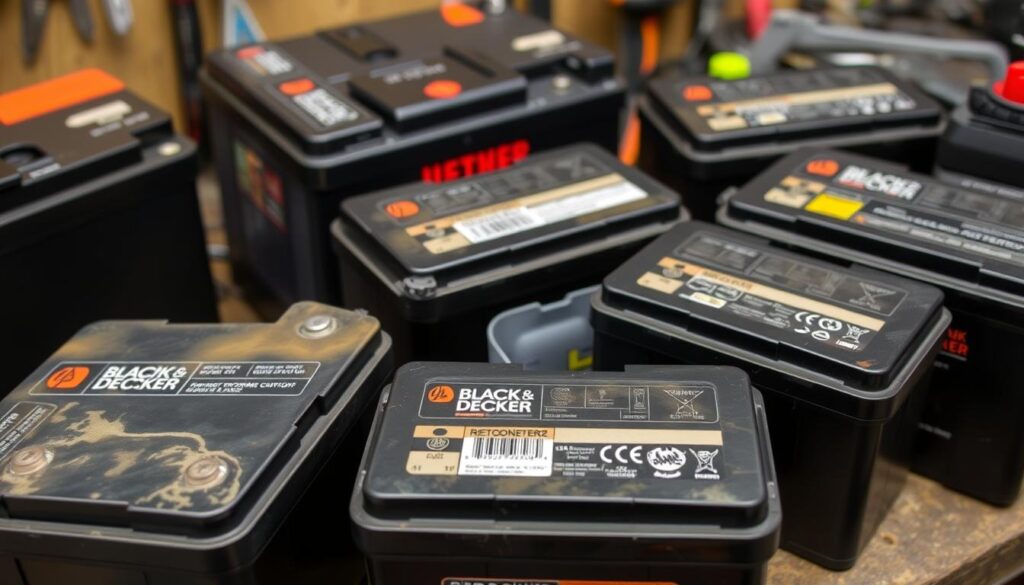
Tools Required for Battery Reconditioning
To effectively initiate DIY battery reconditioning, you need the right set of tools. Having the proper battery reconditioning tools ensures the process runs smoothly and safely. Here are the essential items for your project:
Multimeter
A multimeter is crucial for assessing battery voltage and determining the health of individual cells. This device measures the battery’s current, resistance, and voltage levels, providing vital information for successful reconditioning. Knowing how to read and interpret these measurements is an essential skill for any reconditioning enthusiast.
Battery Charger
A compatible battery charger is required to properly charge the cells once they have been reconditioned. Using an appropriate charger allows you to restore the battery to its optimal performance levels without risking further damage.
Safety Gear
Safety should always be your top priority when engaging in DIY battery reconditioning. Equip yourself with safety glasses and gloves to protect against any potential leaks or damages that may arise during the process. Always prioritize your safety to enjoy a worry-free experience.
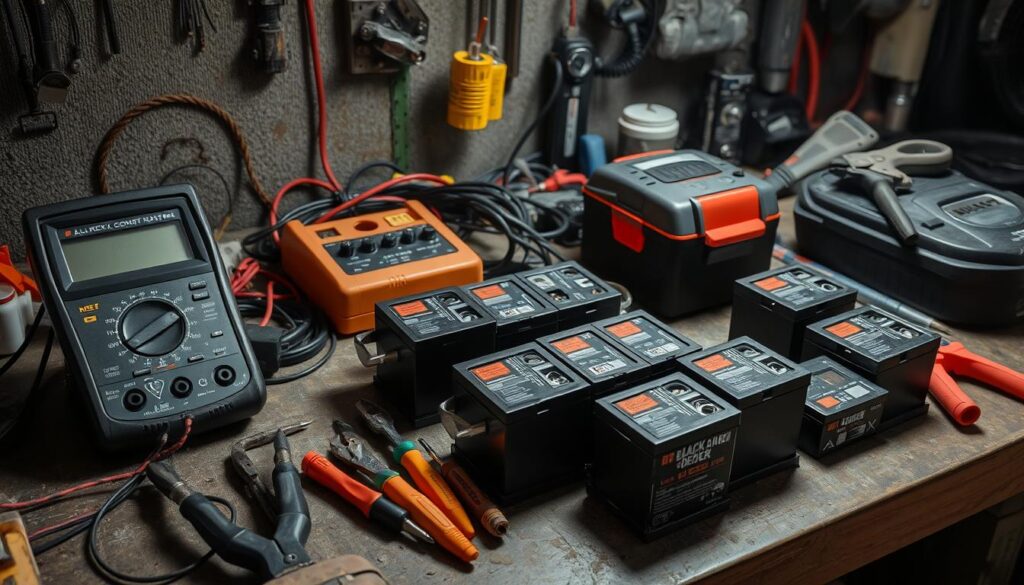
Utilizing tools effectively can enhance your overall reconditioning effort. The investment required for the cells is approximately $9.00, ensuring you can start this project without breaking the bank. Be sure to remove any corrosion visible on the old cells and trim contacts appropriately for installation. Other helpful tools include a utility knife, side cutters, scissors, and a heat gun, which aid in the reconditioning process7. Additionally, various battery rebuild services are available for different Snap-On® battery models with prices ranging from $26.00 to $120.00, which is another aspect worth considering for those who might prefer to outsource this work8.
Step-by-Step Guide to Reconditioning Your Batteries
Reconditioning your batteries can significantly extend their lifespan and efficiency. Following a systematic approach is essential to ensure effective results. This section provides a thorough battery reconditioning guide, covering key stages such as the initial assessment, discharging, and recharging techniques needed to recondition power tool batteries.
Initial Battery Assessment
Start with an initial battery assessment to gauge its current health. Use a multimeter to test the voltage of each cell. If the voltage is below the expected values, it indicates a problem that needs addressing before proceeding further.
Discharging the Battery
Next, it is crucial to fully discharge the battery, which prepares it for reconditioning. Special techniques, such as using a load tester, can ensure a complete discharge while preventing damage to the battery. This step is vital for effective results.
Recharging Techniques
Once you have discharged the battery, employ proper recharging techniques to restore its power. When reconditioning, follow the specific voltage requirements based on the battery type. Safety is paramount; ensure the charger is in a well-ventilated area and avoid operating it in flammable environments to minimize risks. The charger should not be altered in any way to prevent electric shock hazards9. Always check the condition of the battery’s acid and handle it carefully to prevent burns9.
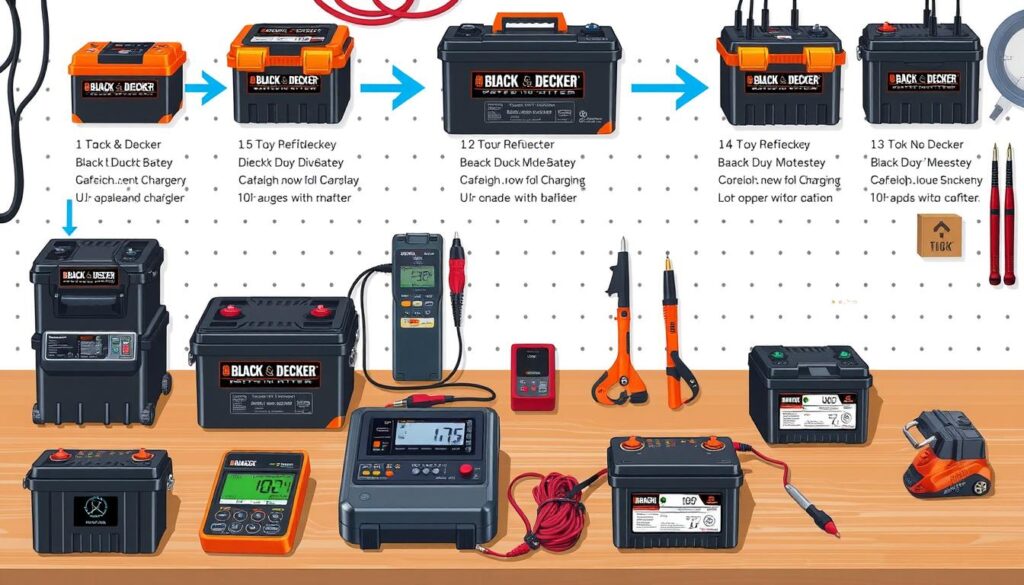
| Step | Action | Notes |
|---|---|---|
| 1 | Initial Assessment | Test voltage with a multimeter. |
| 2 | Discharge Battery | Use load tester or appropriate method. |
| 3 | Recharge Battery | Follow the specific voltage requirements for the battery type. |
| 4 | Safety Check | Ensure good ventilation, avoid flammable environments. |
Reconditioning power tool batteries involves understanding and executing these essential steps effectively. Remember, if after repeated reconditioning cycles you notice no significant changes, consider discontinuing the process and recycling the battery6109.
Safety Precautions When Reconditioning Batteries
Reconditioning batteries can be rewarding, but it’s essential to prioritize your safety throughout the process. Understanding the necessary precautions helps protect you from potential hazards associated with battery maintenance. Here are crucial safety precautions battery reconditioning that you should always follow.
Working in a Ventilated Area
Ensure you are in a well-ventilated space to avoid inhaling toxic fumes. Adequate air circulation minimizes the risk of harmful gases accumulating, which could be detrimental to your health during battery maintenance.
Wearing Protective Gear
Always use gloves and safety glasses to protect yourself from potential spills and accidents. This protective gear is essential for your safety, ensuring that you don’t come into direct contact with corrosive materials that could lead to injuries.
Handling Battery Acid
Be cautious with any battery acid; if dealing with lead-acid batteries, know how to safely manage spills and ensure safe disposal. Awareness of the properties of battery acid can help you implement effective battery maintenance tips to prevent and address issues promptly.
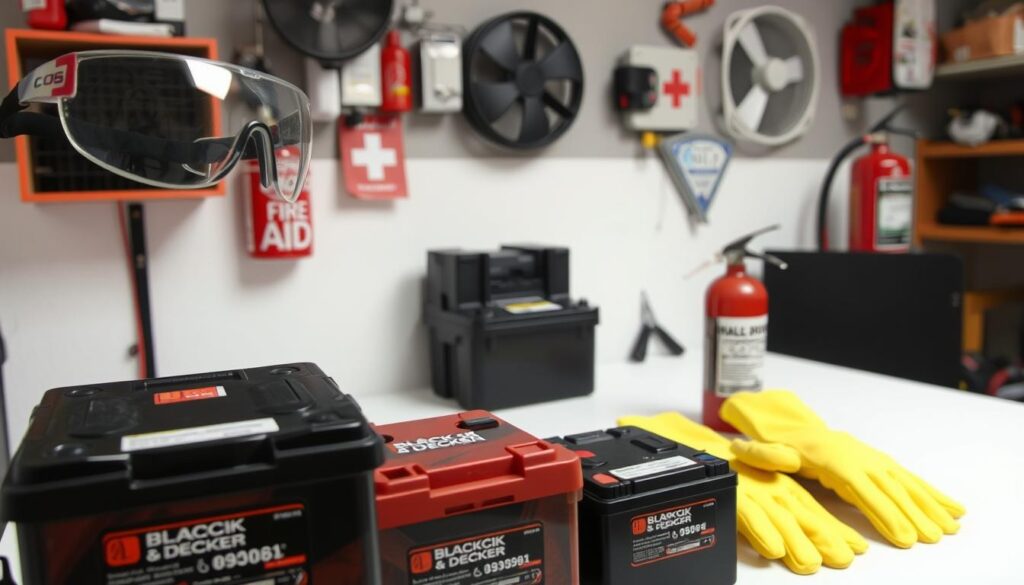
| Safety Measures | Description |
|---|---|
| Ventilation | Maintain a well-ventilated area to reduce inhalation risks. |
| Protective Gear | Wear gloves and goggles to prevent chemical exposure. |
| Acid Handling | Use caution when handling battery acid and know proper disposal methods. |
By following these safety precautions battery reconditioning, you can protect yourself and ensure a smoother reconditioning process11.
Tips for Extending Battery Life
To ensure the longevity of your Black and Decker batteries, implementing effective battery maintenance tips is essential. Applying proper charging techniques and following storage recommendations will significantly help you extend battery life.
Proper Charging Techniques
One effective approach is to avoid overcharging your batteries. Utilizing smart chargers can help charge the battery effectively, ensuring that the cells do not suffer from damage. Regularly monitor your batteries during the charging process to prevent any issues and maintain efficiency in performance. By practicing optimized charging methods, you can significantly increase the lifespan of your battery.
Storage Recommendations
Storing your batteries in a cool, dry environment is crucial for reducing degradation. It’s recommended to keep batteries stored at about 40-60% charge for optimal longevity. Maintaining these conditions prevents unnecessary wear, thus allowing your batteries to perform better over time. Effective battery maintenance tips such as these ensure your batteries are ready for use when needed, while enhancing their lifespan.
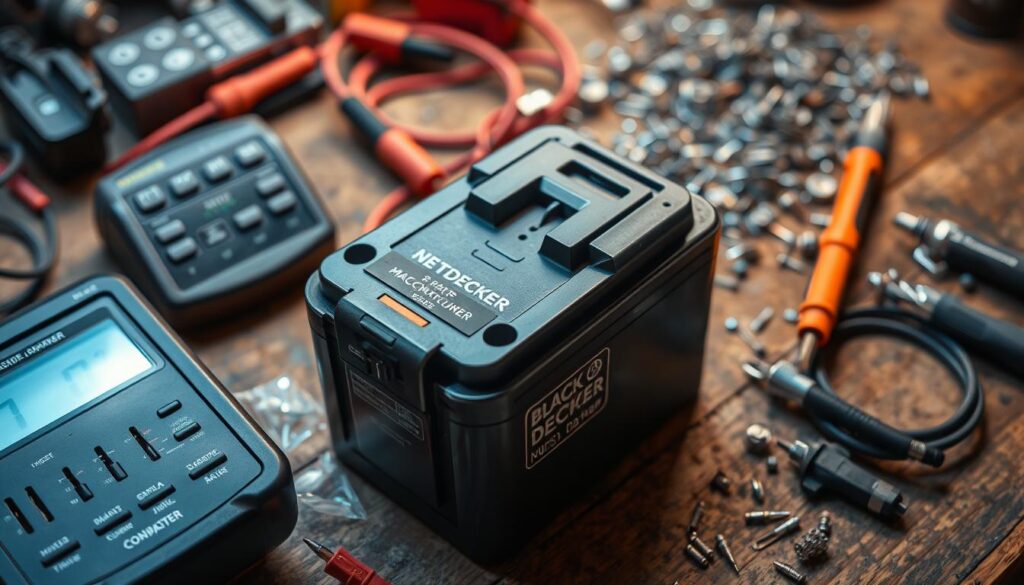
By integrating these tips into your routine, you will contribute to the overall efficiency and functionality of your Black and Decker batteries. Consistently applying such practices fosters a more sustainable approach to battery usage1213.
Common Mistakes to Avoid
Reconditioning Black and Decker batteries can extend their lifespan and save you money. However, there are common mistakes many DIY battery reconditioning enthusiasts make that can hinder their efforts. Recognizing these mistakes is essential for effective reconditioning.
Over-Discharging
One of the most significant black and decker battery reconditioning mistakes is over-discharging the battery. Allowing a battery to reach a complete discharge can often result in permanent damage. Most rechargeable tool batteries have between 300 and 500 recharges before they are considered significantly deteriorated14. Understanding the safe discharge levels for your specific battery type is crucial for effective and safe reconditioning.
Ignoring Safety Protocols
Neglecting safety protocols can lead to dangerous situations, including fires and exposure to harmful chemicals. It is vital to wear protective gear and work in a well-ventilated area to prevent any potential hazards. Furthermore, storing batteries fully charged can shorten their lifespan, and operating at high temperatures can severely damage the cells14. Taking safety seriously ensures that your DIY battery reconditioning efforts are not only successful but also safe.
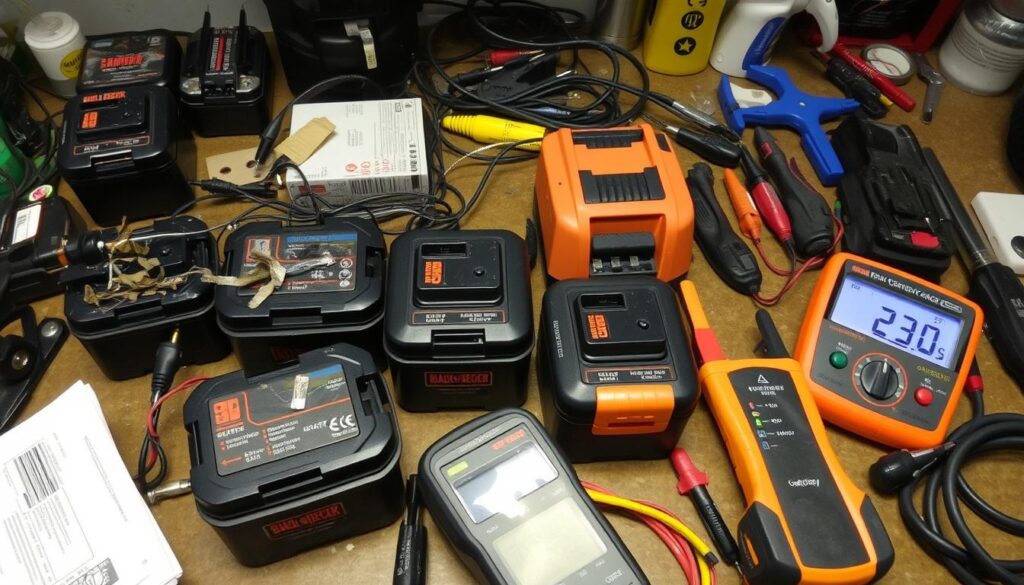
| Mistake | Impact | Prevention |
|---|---|---|
| Over-Discharging | Permanent battery damage | Stop use before full discharge |
| Ignoring Safety Protocols | Safety hazards such as fire or chemical exposure | Always wear protective gear |
| Overcharging | Drastically shorter lifespan | Use smart chargers to regulate charge |
| Inadequate Storage | Reduced battery efficiency | Store in a cool, dry place |
By avoiding these common pitfalls, you can enhance your DIY battery reconditioning outcomes and prolong the life of your batteries. Recognizing these black and decker battery reconditioning mistakes will make your reconditioning experience safer and more effective15.
When to Seek Professional Help
Knowing when to reach out for professional battery help is crucial in maintaining your Black and Decker batteries effectively. You might encounter situations where reconditioning efforts do not yield the desired results, making it essential to recognize specific indicators that suggest professional intervention is necessary.
Identifying Non-Recoverable Batteries
If your battery continues to show signs of failure despite multiple reconditioning attempts, you should consider it non-repairable. Symptoms such as rapid discharge even after a full charge or visible deformation on the battery casing may indicate serious issues. Furthermore, if your charger consistently signals a fault while connected to the battery, it signals a need for replacement along with the possibility that your battery has reached the end of its life. Knowing when to replace batteries can prevent further damage to your tools and ensure optimal performance within your projects.
Specialized Services Available
In situations where your efforts fall short, seeking out specialized services for Black and Decker battery restoration can provide expert assistance. Many facilities focus on reconditioning various battery types, offering tailored solutions that might not be available through DIY methods. Local battery shops or authorized service centers often employ trained professionals who can perform thorough diagnostics and repairs, ensuring your equipment remains in top condition for future use.
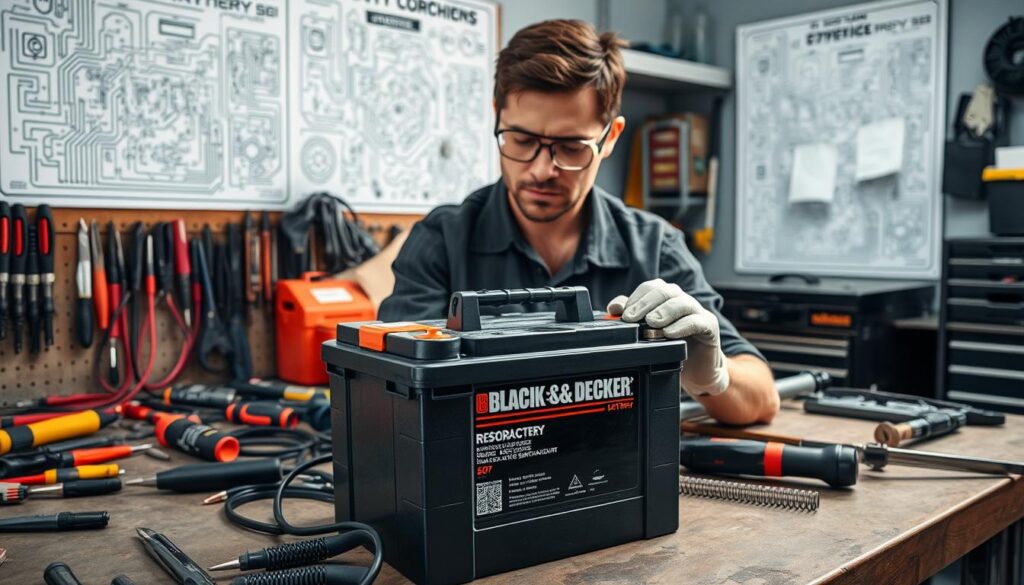
Searching for dependable services in your area can simplify the process, ensuring consistency in quality and the longevity of your battery products. Remember that while DIY solutions have their place, professional intervention can often save you time and money over the long run16.
Conclusion: Your Path to Better Battery Health
As you wrap up your journey through the battery reconditioning guide, it’s crucial to remember the essential steps for success. Start by understanding the type of battery you’re working with—whether it’s Nickel Cadmium, Lithium-Ion, or Lead Acid. Knowing the signs that indicate your battery needs reconditioning, such as reduced runtime or overheating, will set the stage for effective maintenance. Utilizing the right tools, from a multimeter to safety gear, ensures you tackle the task safely and efficiently.
Recap of Key Steps
In order to keep your Black and Decker batteries performing optimally, always practice preventative measures. Regularly clean terminals to reduce corrosion, store batteries in cool environments, and avoid deep discharges whenever possible. The commitment to embrace battery maintenance not only extends the life of your batteries but also keeps your tools reliable for any project you take on1718.
Embracing Battery Maintenance
Finally, remember that battery health is an ongoing process. Regular tune-ups, such as checking connections and maintaining proper charging conditions, can significantly enhance performance. By being proactive about battery care, you not only save money but also contribute positively to the environment through reduced waste. With proper reconditioning and attention, your Black and Decker batteries can continue to serve you well into the future.

